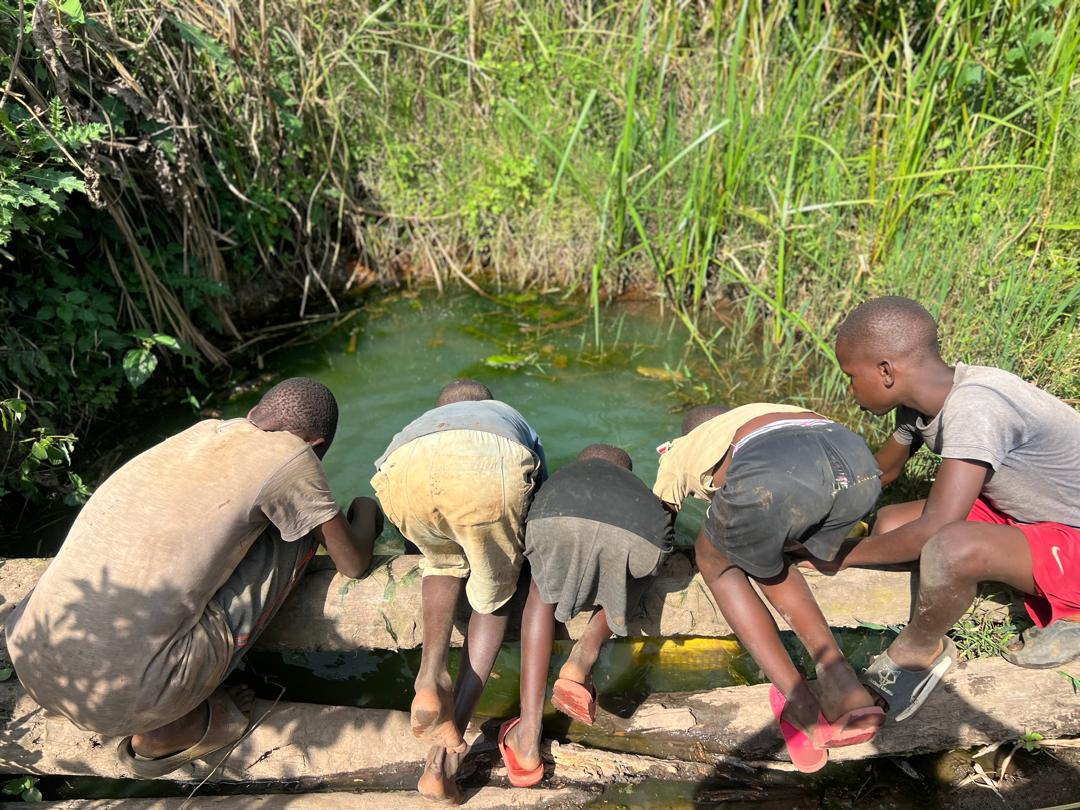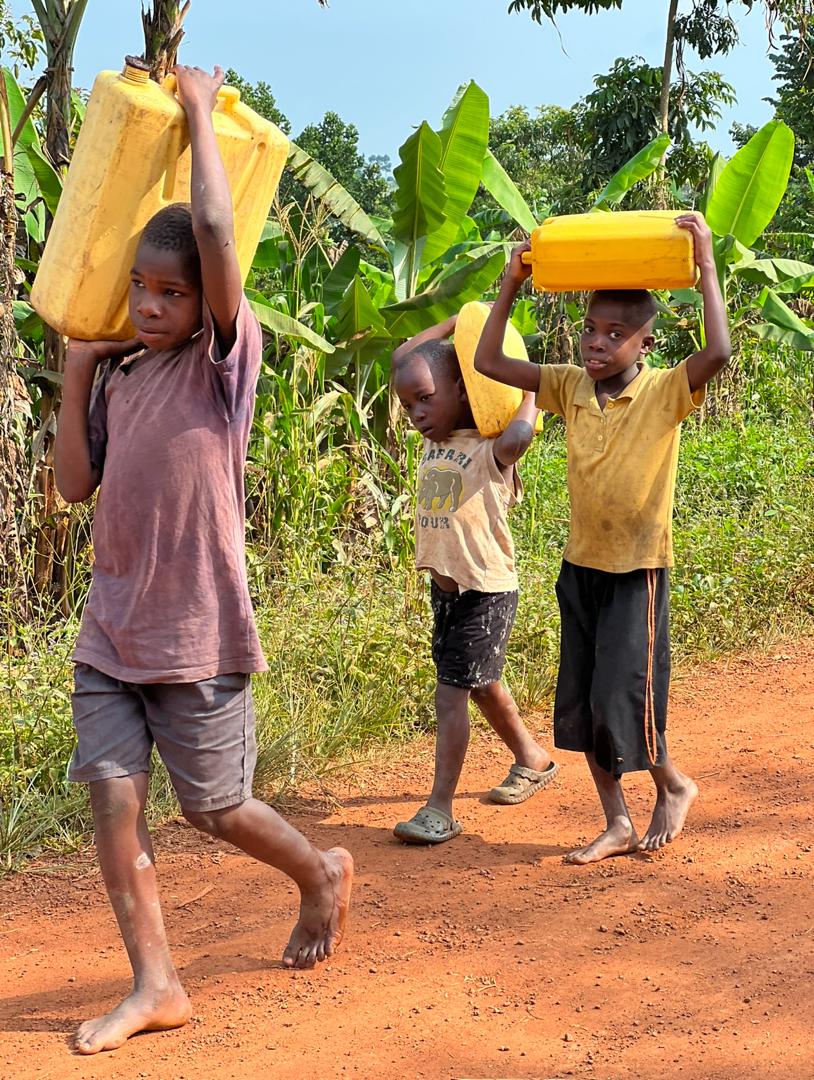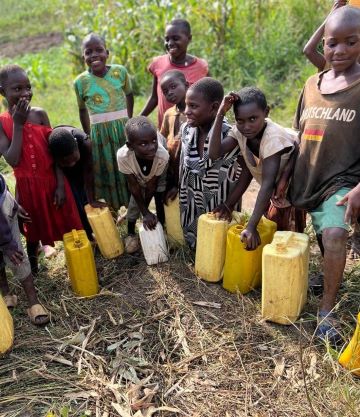Introduction
Kalangalo, like many remote communities, is struggling with a severe water crisis. At both individual and community levels, the only water source available is a spring located nearly 2 miles away in the forest. This poses risks to the community, especially children who face dangers like kidnapping and drowning due to the unsafe conditions surrounding the spring. The need to fetch water from afar also results in children missing out on education. Furthermore, without sufficient water, agricultural activities become impossible, exacerbating food insecurity due to poor or failed harvests caused by persistent drought conditions and lack of irrigation.
Challenges:
Health Risks: Contaminated water sources can lead to waterborne diseases and health issues within the community.
Economic Impacts: Insufficient water access hinders agricultural productivity, affecting livelihoods and economic stability.
Social Burdens: The burden of fetching water falls disproportionately on women and children, impacting their well -being and educational opportunities.
To address these challenges, a comprehensive water program needs to be developed for Kalangalo, in Mityana. This program should focus on gathering, storing, purifying, and distributing water efficiently among community members. One key initiative could involve digging a well in a suitable location within the community accessible to all residents. By implementing such a program, the target beneficiaries would be the entire community of Kalangalo in Mityana. This community exists out of over 150 households and in total approximately 900 people.
Scope
Creation of two wells for the community of Kalangalo.
The priority for a well at the farmland is very high, and the positive impact on the community of having their own well is so enormous, that these our top priorities.
Project Breakdown
- Stage 1. Water Source Development (60%)
- Identify and construct a well in a suitable location within the community, accessible to all residents. [to do]
- Ensure the well is properly constructed and equipped with necessary infrastructure, such as pumps and storage tanks. [to do]
- Stage 2. Water Purification and Distribution (30%)
- Implement a water purification system to ensure that water obtained from outside the well is safe for consumption. [to do]
- Establish a distribution network to efficiently deliver the purified water to households and community facilities. [to do]
- Stage 3. Health Education (10%)
- Educate the community on the importance of clean water and proper hygiene practices to reduce the risk of waterborne diseases. [doing]
Expected from Project Facilitator
- Develop a comprehensive project plan, including timelines, budgets, and resource allocation.
- Coordinate with stakeholders, including community members, local authorities, and contractors.
- Ensure all necessary permits are obtained before and after construction.
- Ensure the project complies with local regulations and environmental standards.
- Oversee the procurement of materials and equipment.
- Manage the project budget and ensure cost-effective use of resources.
- Lead and motivate the project team, including contractors and laborers.
- Provide clear instructions and support to team members.
- Supervise the construction activities to ensure they are completed on time and within budget.
- Address any issues or challenges that arise during construction.
- Ensure the quality of construction meets the required standards.
- Conduct regular inspections and tests to verify the quality of work.
- Engage with the community to ensure their needs and concerns are addressed.
- Provide training to community members on well maintenance and usage.
- Maintain detailed records of project activities, expenses, and progress.
- Prepare regular reports for stakeholders and funding bodies.
- Monitor the project’s impact on the community and environment.
- Capture knowledge for future use, available through our online school
- Evaluate the project’s success and identify areas for improvement.
Definition of "Done"
- Clean streaming water is available for the community of Kalangalo.
- Regular and sufficient irrigation is possible at the farmland.
- The captured knowledge is made available through the online school.
Program Impact
The expected impact of the water management project is: [work in progress]
- Measurable impact
- Health: Reduction in Waterborne Diseases: With access to clean water, the 900 residents will experience a significant decrease
in diseases such as cholera, dysentery, and typhoid [..].
- Economic: Job Creation, construction and maintenance of the well will create employment opportunities within the community.
[4 boda boda riders, for 150 households, on average 1,5 times a day, for 750 UGX (making aprox. 1 million UGX per year for each
boda boda rider.]
- Social: Children will spend less time fetching water and more time in school, improving educational outcomes.
[135 households will collect water themselves. The centrally placed well will save them on average 3 hours per day. This makes a
total of 120,000 man hours per year for the entire community, that can be spent on something else].
- More Generic impact
- Health: Improved Hygiene: Enhanced personal and community hygiene practices will lead to better overall health [We will measure
this after ralisation of the project by means of a questionnaire at the well].
- Environmental: Properly managed wells can ensure long-term water availability for the community.
- Long-term Sustainability, Community Empowerment: Training and involving the community in water management will ensure
sustainability.






